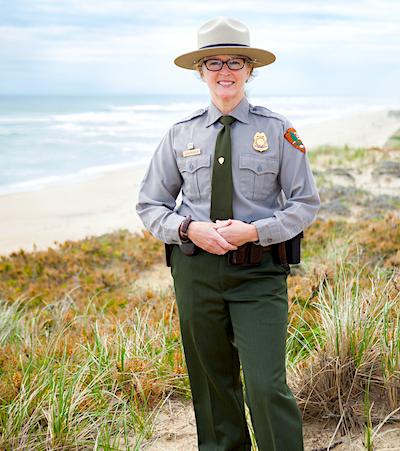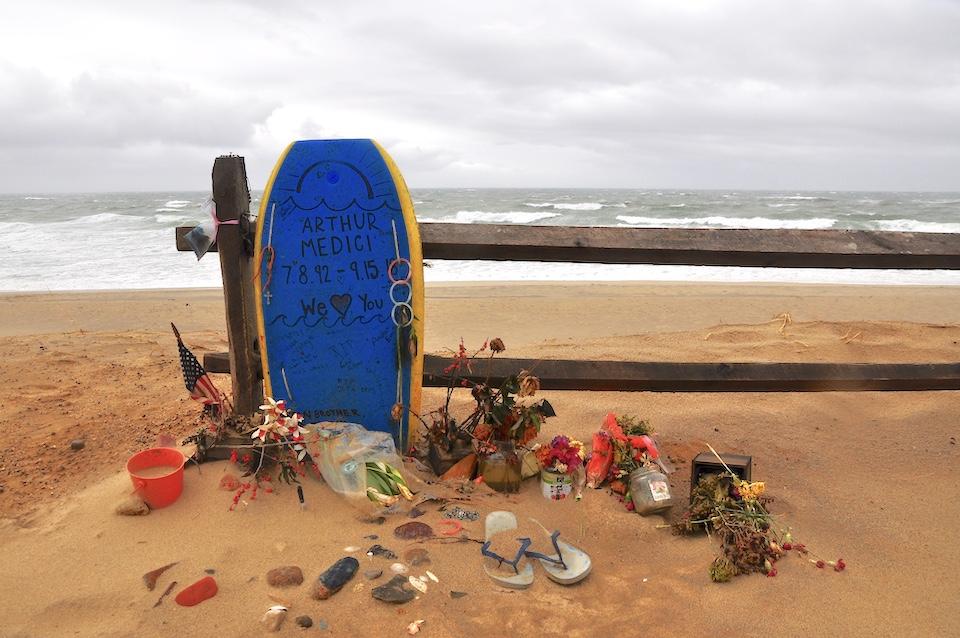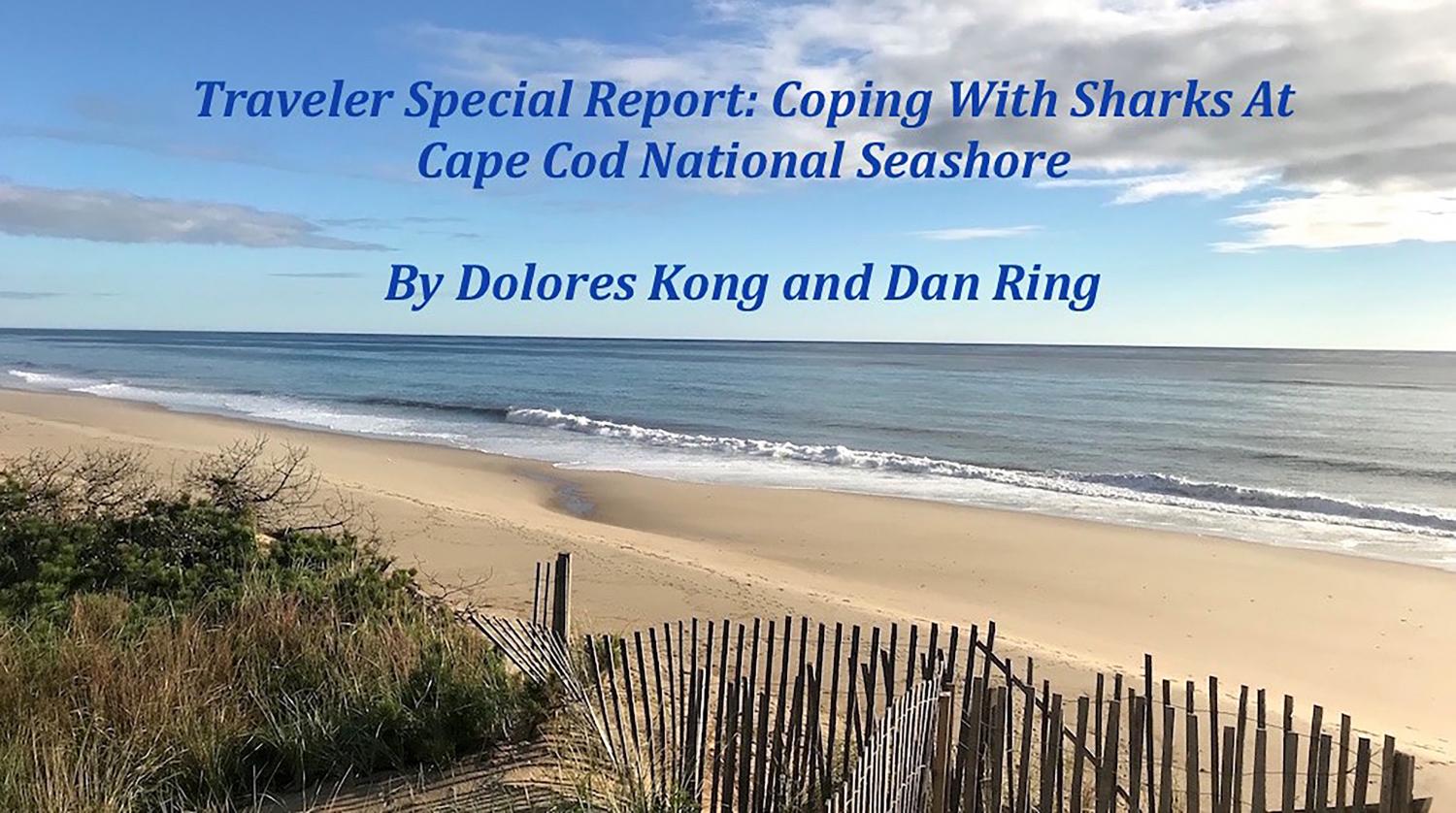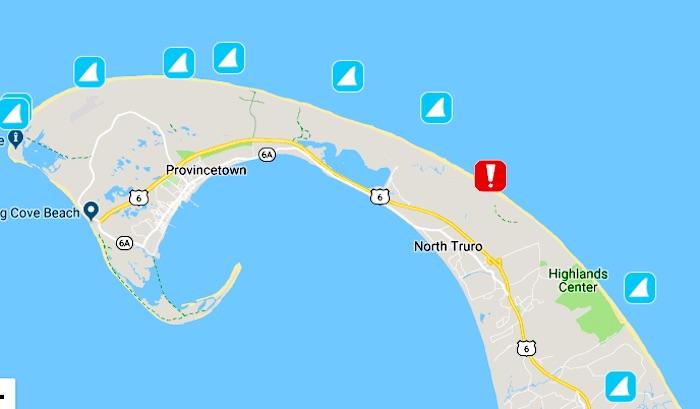Cape Cod’s surf-sprayed sandy beaches, long the setting for classic summer seaside vacations, have taken on a more menacing appearance with the arrival of one of the planet’s most powerful predators.
Great white sharks, lured to this Atlantic Ocean playground by one of their favorite meals, gray seals, twice attacked swimmers last summer, leading to the death of one of them.
In the wake of those attacks at Cape Cod National Seashore, National Park Service staff plans to post bold warning signs and take other steps to boost public awareness and safety.
Though the cape’s waters may be attracting more and more white sharks in recent years, its residents and vacationers are not unique in having to coexist with these predators. There were 92 unprovoked shark attacks on people in the world in 2018, including 30 in the United States, according to Ralph S. Collier, director of the Global Shark Attack File, which is sponsored by the Shark Research Institute in Princeton, New Jersey.
Of last year’s six fatalities, just one occurred in the United States, and that was at the national seashore in Massachusetts.
The great white shark rules the waters off Cape Cod during summer and early fall each year. But in recent years it has been drawn closer to shore to feed on gray seals, whose numbers have skyrocketed off Massachusetts since being protected by federal law nearly 50 years ago.

Cape Cod National Seashore Chief Ranger Leslie Reynolds wants visitors to appreciate that great white sharks are part of the environment/NPS
Other national seashores, Cape Hatteras in North Carolina and Point Reyes in California, have experienced shark attacks over the years, too, but with Cape Cod’s attacks just last summer, the public safety, education, and research efforts have intensified in the Bay State.
Swimmers and surfers need to understand that the national seashore is a wild place and the white shark is native to the area, said Leslie Reynolds, the seashore’s chief ranger.
While a shark’s behavior cannot be forecast, the risk of an attack is rare. The odds of a person getting killed by a shark are 1 in about 3.7 million, compared to 1 in 63 from the flu. And while sharks kill an average of six people every year, humans kill up to 100 million sharks a year.
When a white shark attacks, the results can be devastating, as shown by last summer’s two predatory attacks that occurred at municipal beaches within the boundaries of Cape Cod National Seashore.
“The risk is real and there are very real consequences,” Reynolds said. “These two incidents unfortunately really highlighted that.”
In both attacks, the shark is believed to have mistakenly viewed people as a food source.
The first occurred on August 15 when Dr. William Lytton, wearing an orange bathing suit, was 20 minutes into a planned 30-minute swim off Longnook Beach in Truro when he said he was bitten in about 8 feet of water while about 10 feet offshore, leaving him with serious injuries.
A month later, Arthur Medici, 26, of Revere, Massachusetts, died after being attacked by a white shark while bodyboarding off Newcomb Hollow Beach in Wellfleet. The engineering student, who was reportedly wearing a dark wetsuit and swim fins, received life-saving measures on the beach but lost a lot of blood from leg wounds and was later pronounced dead at Cape Cod Hospital.
Among the stepped-up efforts planned for this summer by the seashore at its six beaches, according to Chief Ranger Reynolds:
* Spending $60,000 to install emergency call boxes
* Posting new caution signs that show a white shark baring its large teeth under a bold “WARNING” that the animals hunt seals in shallow water at the beach and that people have been seriously injured and killed by white sharks along the coastline
* Emphasizing training for treating significant bleeding injuries, with lifeguards and staff taking “Stop the Bleed” courses taught by local fire departments
* Equipping lifeguards, interpretive rangers and certain maintenance employees with more “stop the bleed” kits, which include two pairs of gloves, tourniquet, bandage, trauma shears, gauze dressing and emergency blankets, and placing the kits along the beach driving corridor and in boxes on beaches so the public can access them
* Educating the public about seals and sharks in interpretive programs, through rack cards at the off-road vehicle office, visitor center and fee booths, and possibly by posting a ranger on one of the shuttle systems
These measures come as research shows more white sharks patrolling the seashore waters, and as scientists gain insights into the behavior of these top predators and work to understand how to minimize the risk of shark attacks.

An impromptu memorial was set up on the beach for Arthur Medici/Davitt Woodwell
From 2013 to 2017, on average for all six beaches owned by the seashore, lifeguards closed the water to swimming 12 times for at least an hour following a confirmed shark sighting. The number of such closures rose to 27 in 2018, Reynolds said.
As part of a 5-year study that counts and tags white sharks off Cape Cod, researchers have identified at least 320 different white sharks, ranging from 6 to 18 feet long, and 100 to 4,000 pounds, during 2014 to 2016, and tagged 151 of those.
Using spotter planes and a 24-foot research vessel, the team takes and reviews videotapes of each of the sharks, differentiating them by looking at “fin shapes, scars, and color patterns where the dark gray meets the white underbelly, in particular near the pelvic fins, gill area, and tail,” said Gregory Skomal, program manager and senior scientist for the Massachusetts Division of Marine Fisheries who leads the research financed largely by the nonprofit Atlantic White Shark Conservancy.
It’s a long and tedious process; data from 2017 and 2018 are still being analyzed. While white sharks have roamed the world’s oceans for more than 400 million years, much is still to be learned.
Skomal said there has been a shift in the distribution of white sharks closer to shore and that he believes the sharks are following gray seals for food.
Gray seals, which can see males grow to nearly 900 pounds, were nearly wiped out by hunting between the late 1800s and 1960. Their population rebounded thanks largely to their protection under the Marine Mammal Protection Act of 1972.
A study led by Duke University estimated the current number between 30,000 and 50,000 off Massachusetts. The white shark is also protected by laws in the US and several countries and by the Convention on International Trade and Endangered Species.
Most sharks differentiate between seals and people, and it is clearly a case of mistaken identity when a shark attacks a person, Skomal said. But when the sharks are hunting for seals they are in full attack mode, and they make mistakes, he said.
The two attacks on people off Cape Cod in 2018 were predatory, Skomal said, because white sharks typically try to surprise their prey and kill through great speed and power and those factors were present in the two incidents.
Skomal said two other attacks at the seashore, one in 2017 and another in 2012, may have been exploratory bites since they lacked the violence of the 2018 attacks.
In August of 2017, a white shark bit a stand-up paddleboard off Marconi Beach in Wellfleet. The paddleboarder was not hurt or thrown into the water, suggesting an exploratory bite.
To minimize the threat to beach goers, Friends of the Cape Cod National Seashore is joining with some Cape Cod towns and other entities to help pay for an estimated $50,000 analysis of ways to help prevent shark attacks. The study by the Woods Hole Group, expected to be completed in September, will look at using drones, balloons with cameras, sonar on buoys, and artificial intelligence to detect sharks; magnetic, electric, and acoustic shark repellents; orca recordings to scare away sharks; or adaptive camouflage for surfboards and wet suits.
The study is also looking at physical barriers of rigid plastic mesh, simulated kelp forests, netted enclosures or bubble net, and biological alternatives that might require a change in federal protection laws, such as culling seals or sharks or contraception on gray seals.
Some local residents are concerned that the response effort is taking too long, as the Woods Hole Group study won't be finished until September, after the busy summer season, according to a report by The Associated Press.
In response to concerns about the timing of the study's release, Cynthia Wigren, president and co-founder of the Atlantic White Shark Conservancy, which is helping to fund the study, said:
"We know from speaking to people from around the world who are also dealing with shark-human conflicts, that there is no silver bullet. If any strategy is implemented, that will not guarantee safety. The things that are going to be in place this season regarding improvement in communications and first response are really going to be critical going forward because we recognize that there is no silver bullet."
Cape Cod National Seashore Doesn't Have A Monopoly On Shark Attacks
By Dolores Kong and Dan Ring
At least 11 shark attacks, including one fatality, have been documented between 2001 and 2017 at national seashores in North Carolina and California, but public safety and education efforts appear less intense than those at Cape Cod National Seashore, with its two attacks in 2018.
At Cape Hatteras National Seashore in North Carolina in 2015, three swimmers, all men between the ages of 18 to 67, were seriously injured when attacked by sharks in separate incidents off Avon, Waves and Ocracoke over the course of a week in late June and early July.
In July 2011, a 6-year-old girl was injured when attacked by a shark while on a boogie board in about 18 inches of water at Ocracoke Island Beach, and in September 2001, a 27-year-old man died and his girlfriend was seriously hurt when they were bitten by a shark near Avon while swimming to a sand bar off the seashore.
In an email, Mike Barber, public affairs specialist for Cape Hatteras, said ocean safety is discussed at the beginning of every interpretive program given by park rangers, and there is a shark awareness page on the seashore’s website. When asked if the seashore has signs about sharks at the beaches, he responded that the seashore has “general ocean safety signs” that include rip current safety tips at each of the beach access areas[K1] .
On the West Coast at Point Reyes National Seashore, located about 30 miles north of San Francisco, a woman suffered minor injuries when she was bitten by a shark on her left toes while surfing at Drakes Estero in December of 2017, according to the Global Shark Attack File.
Previously at Point Reyes, there were three white shark attacks, including one on a surfer in 2004 at Limantour Beach, another in 2006 involving a surfer at Dillon Beach, and on a kayaker who was not injured when a great white slammed his paddle in 2008 off Dillon Beach, according to the Global Shark Attack File, media, and NPS reports. At Stinson Beach, within Golden Gate National Recreation Area, a surfer was critically injured in a shark attack in 2002.



Comments
I believe the statistic cited for your chances of dying from the flu is incorrect.
Thanks for the comment, @wild places. The source of the stat is here, from the International Shark Attack File: https://www.floridamuseum.ufl.edu/shark-attacks/odds/compare-risk/death/ - Dolores Kong and Dan Ring
Thanks for the source Acadia. I see how they came up with their numbers now. Using their mythology they are in fact correct so I apologize. I've got this love-hate thing going with statistics. I love them for analysis & hate them for how they are often used. Nice article by the way and interesting web site.
Good article. It's important for people to understand the Cape waters and to respect them. Will always be my favorite place.
Culling one species - in this case, local seals, - to protect another - humans from rare shark bites - NEVER works. Please do not implement this cruel, ill advised and ineffective strategy.
Thanks for the comment, Karen. We certainly agree with your sentiments on the Cape Cod National Seashore. It's amazing to think that less than a year after he took office as president, John F. Kennedy, a longtime resident of Hyannisport on the Cape, signed the bill to create the Cape Cod National Seashore.
Thanks for your comment, Laura. In order to cull seals, or to harass them in any way, it would require a change in the federal Marine Mammal Protection Act in the US. Such a change would be very difficult to accomplish. Canada, on the other hand, has allowed seals to be hunted commercially. Is there a safe and humane way to move the seals away from the shores of the national seashore to make it more safe for people to swim? Maybe, maybe not, but even moving the seals could be considered harassment and would require a change in federal law.
Please adjust the language to make more clear the Shark App is NOT real time. It is not to be misunderstood this is not real time alerting of tagged sharks. We have no real time alerting today. Data from the tag pings are downloaded weekly and uploaded to the ap some days after the actual event